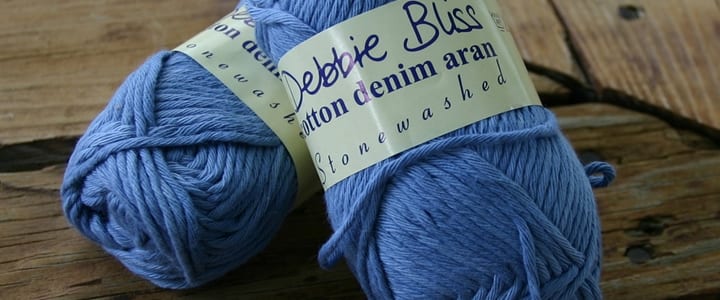Do you enjoy knitting, but only stick to patterns for beginners? Read on as Woburn, MA teacher Belynda C. shares a helpful tip to help you tackle the more complicated projects…
Have you ever looked at a particularly challenging pattern and thought, “How do people keep track of that?”
I know I have! I trended toward using the knitting patterns for beginners I found on the web. It was a long time before I felt brave enough I take on something tricky.
The first time I took on a challenging pattern — the “Summer Flies” half-circle shawl by Donna Griffin — I skipped a row of work. I didn’t realize it, and knitted about four inches of really beautiful lacework on the wrong side of the shawl. I was trapped on a cross-country flight when I realized the error, and spent a good deal of the flight undoing my work. I didn’t actually cry, but it was a close call. It cost me a few extra hours between ripping out the work and re-doing it to face the correct side. Ripping the work was disheartening, but trying to find a place to put the “live” stitches back on the needles was daunting. With 150 stitches on the row, it took a while to get all the stitches back on the needles safe and sound.
As I learned later, it didn’t have to be that way! There’s a simple trick that will allow you to take a risk and tackle complicated patterns — a little bit at a time. It’s called a “lifeline,” and it will give you an instant confidence boost when taking on larger or more intricate projects such as circle shawls, cabling, or knitted lace.
A lifeline is a thin piece of thread or yarn worked through a row of knitting to act as a “stopper” for a row of stitches. It helps to think of it as an insurance policy in case you need to take your work off the needles to rip it back (called “frogging,” since you have to “rip it, rip it, rip it!”). Should you have to pull work back, you can frog away, knowing your lifeline will prevent live stitches from pulling back past a certain point. You can add lifelines at regular intervals, or add one at a time, pulling it out when you are sure the work in that section is correct.
Working in a lifeline is a very simple process. When you come to the end of your desired row, thread a tapestry needle with a thin, non-felting yarn (cotton and nylon make good choices — you can even use dental floss!). Carry this thread along the inside of your row, parallel to the needle. Once this is done, continue to knit your piece. Try not to pick up your lifeline as you knit the next row of stitches. Not to worry if you do — the lifeline can still be pulled free once it is no longer needed, though it might take a little extra work to do so. A lifeline also makes it easy to guide your stitches back onto the needle. It keeps individual stitches from getting twisted, and keeps your more complicated stitches (like twists and cables) from coming unraveled.
The lifeline is a great way to ensure you can work on difficult pieces with confidence. Taking on more challenging patterns is the best way to improve your skills, and keep your favorite hobby interesting! For a visual demonstration of the lifeline technique, check out this video at Knitting Help.
Whether you’re looking for knitting patterns for beginners or more advanced techniques, there are great resources on the web for free or low-cost patterns:
- Ravelry – I like to call Ravelry “Facebook for knitters.” It’s a social media platform that lets users share patterns and ideas, show off finished projects, and get help with works in progress. You can also find special interest groups and knit-alongs (KALs). You’ll need to sign up for an account, but it’s free and utterly fabulous.
- Vogue Knitting – Vogue Knitting International magazine is one of the big names in knitting, and they offer a database of beautiful free patterns for all experience levels.
- Lion Brand Yarn – Many commercial yarn brands offer patterns for their products, but Lion Brand offers hundreds of economical yet beautiful yarns, and just as many patterns to inspire you. If you find something you fancy, you can order the suggested yarns and notions for that pattern right from their website.
Happy stitching!
 Belynda C. teaches knitting and writing in Woburn, MA. She earned her Bachelor of Science in English from Northeastern University. She has been knitting for over five years, and has taught children as young as 8. Learn more about Belynda here!
Belynda C. teaches knitting and writing in Woburn, MA. She earned her Bachelor of Science in English from Northeastern University. She has been knitting for over five years, and has taught children as young as 8. Learn more about Belynda here!
 Photo by amyeetx
Photo by amyeetx
Suzy S.
